-
Mill Valley Film Festival 44 (Oct. 7-17, 2021)
Mill Valley Film Festival 44 (Oct. 7-17, 2021)
GENERAL FILM FORUM
CAPSULES OR REVIEWS:
ANIMA (Jinling Cao 2021) X
BECOMING COUSTEAU (Liz Garbus 2021)
BERNSTEIN'S WALL (Douglas Tirola 2021)
JOCKEY (Clint Bentley 2021)
JULIA (Julie Cohen, Betsy West 2021) X
MOTHERING SUNDAY (Eva Hussan 2021)
MY DEAD DAD (Fabio Frey 2021)
THE RESCUE (Jimmy Chin, E. Chai Vasarhelyi 2021)
THE VELVET UNDERGROUND (Todd Haynes 2021)
X = Capsule review only for Mill Valley
JULIA (Julie Cohen, Betsy West 2021)
All about Julia Child, author of the seminal Mastering the Art of French Cooking and an icon who taught generations of Americans how to take the kitchen and food seriously. Full of bubbly joie de vivre, just like Julia, this film does her justice.
THE VELVET UNDERGROUND (Todd Haynes 2021)
The most beautiful music documentary I've ever seen, a pure work of art. Use of split- and multiple-screen is a delight to the eye, elegant, and packs in a lot of visual information. But still leaves room for future docs about this seminal but under-documented sixties band with more detail about the music and the emotional clashes and the later accomplishments of the band members.
Last edited by Chris Knipp; 03-22-2023 at 07:20 PM.
-
BECOMING COUSTEAU (Liz Garbus 2021)
capsule for Mill Valley:
LIZ GARBUS: BECOMING COUSTEAU (2021)
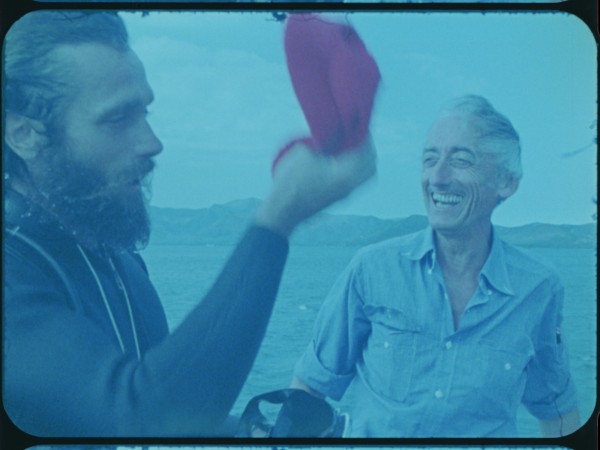
From adventurer to ecologist to prescient profit of doom
Liz Garbus is a frantically productive doc maker known for among others Bobby Fisher Against the World (2011) and What Happened, Miss Simone? (2015) Made in collaboration with the Cousteau Society and co-produced by Cousteau’s widow Francine and children Diane and Pierre-Yves, this documentary could risk feeling like a whitewashed, official version of Cousteau’s life, a work that aims "to burnish a legend" rather than "explore ... personal depths" (The Wrap;"). But his failings are here, and this is, however conventional, a richly illustrated depiction of an immensely important man in his time whose clarion cries are more relevant than ever today.
Why do I feel sometimes, though, that I've been fed most of this information before? Because I saw it thoroughly rehearsed in dramatized form in Paris in the film L'odyssée (Jérôme Salle 2016), starring the excellent Lambert Wilson and Pierre Niney, which I saw a second time in the Rendez-Vous at Lincoln Center in 2017. No matter: this is the authoritative, authorized documentary version, with access to the wealth of lifelong film documentation that's available. "Je m'amuse," Cousteau says in one of the many recordings. "I'm having fun." And it is fun and inspiring to watch him, even when he is saddened and his vision turns dark.
Cousteau got a Pathé camera at age 12; it helped conquer his shyness. Later a very bad car accident that broke 12 bones led him to swim: it helped him heal. Then he started to dive, and to photograph, and the rest is history.
He was a naval officer, hence "Captain Cousteau." At first he began diving with two others. The "three musketeers of the sea" ("Les Mousqemers") fellow naval officer, Philippe Tailliez, Maurice Fargues. they were reduced to two when they started going deep and Sept. 17 1947 one of them, Fargues died going down 120 meters, using the new aqualung to set a world record for diving depth; they had not yet learned (one would have liked more about this whole process) that at such depths consciousness is affected and a diver can endanger himself without knowing it (undersea high).
His documentary film The Silent World (1957) was immensely popular. His show on ABC "The Undersea world of Jacques Cousteau" (1966-1976) became one of the most popular television shows of all time. An important aspect of the success was this quintessentially French guy's and his sons' ability to function fluently in English. `The show, which was managed to be both popular and urgently important, unveiled the wonders of the sea, and, gradually, its unmaking. The Cousteau family were and are formidable defenders of this huge underwater part of planet Earth. Jacques was early in recognizing that the sea had been trashed; the fragility and importance of coral reefs; the disintegration of icebergs. He saw how the planet's climate hinges on the condition of Antarctica: he saw it all, forty years ago, global warming, droughts in the United States, famine in Africa.
Calypso (rechristened no doubt) was "basically a mine-sweeper;" they got it in 1950 art a bargain price with a grant from a wealthy conservative British supporter, Thomas Loel Guinness. "It's a person not a boat," Cousteau said. It became the heart of his world as an explorer, impresario, filmmaker: The Life Aquatic with Jacques Cousteau. Their first voyage had "le partum de l'aventure, de la nouveauté, l'iréel" (the fragrance of adventure novelty, the unreal).
Calypso was an empire, Jacques-Yves the king. His sons Jean-Michel (more a manager) and Philippe (an explorer like their father) were also part of the world. His wife Simone was a manager, wedded not to the sea but to the boat, always on board, Jeanne-Claude to his Christo, the only women on board, avoiding being in the films, but in photographs plainly having a good time, and said to have been a good diver.
Cousteau seemed about to sell out to the petroleum industry - he did discover major oil in the Persian Gulf - but he saved himself from such a sellout by beginning his ABC television show "The Underwater World," in 1968. "On January 8, 1968, "The Undersea World of Jacques Cousteau" debuted on ABC. The show is vintage Cousteau, featuring the French adventurer-slash-scientist wearing a red cap, a skimpy bathing suit, and smoking like a chimney." (He and his two sons wore red caps and black outfits, their uniform. He had lean dash and dazzle, pearl-gray swept-back hair, flashing teeth.) Chris Higgins: "If you've seen The Life Aquatic with Steve Zissou and you haven't seen the Cousteau films, you're in for a treat."
When Cousteau began on American television he was 58, and he did not look young. Who was this old French guy? The audience soon learned. And then Cousteau became a crusader for ecology, for saving the ruined, trashed sea. And he founded The Cousteau Society. He claimed 160,000 members in the late seventies; now it has 50,000. Perhaps it is outstripped by son Jean-Michel in 1999.
He was devastated by the death in a private seaplane crash of his son Philippe at 39 in 1979. He blamed himself for allowing his son to fly, and declared that his punishment would be that he would work to the end. It's said he aged ten years, and became more pessimistic about the future of the sea. We learn that ABC dropped Cousteau's specials in the late seventies "because he was getting too dark."
He was fed up with the cult of his own personality and more and more hopeless about saving the planet, which he thought was too late. "We spoil the planet every day, more and more."
At this point the film introduces Cousteau's second wife, Francine, a 41-year-old French woman diver who married him when he was 80, a year after his wife Simone died of cancer at 71. But wait! His two children with Francine were born in 1980 and 1980, long before his wife Simone died. The relationship with Francine was not talked about, but everyone knew about it. On board. But Simone kept secret how sick she was and went on a last Calypso voyage when she was dying, with widespread cancer. She said theCalypso was the reason why she was alive. The young kids whom Francine had when Cousteau was 70 may have revived his smile. They are vibrant kids - divers, of course.
The film ends on a triumphal note against the odds. Cousteau is successful in getting a multi-nation treaty to leave Antarctica intact for 50 years. He is a major figure at Rio 1992, the earth conference, the only one standing as an equal of heads of state. He is heard expressing optimism about mankind's ability to learn. And he gets a funeral at Notre Dame cathedral. His eighties were spectacular. he had an impressive old age. Let's hope his optimism is validated, not his pessimism. The film ought to have ended on a stronger, more honest note; it would have been fairer to the man's legacy of intense eco-awareness to do that. But he wouldn't even have liked the title. He was insistent that his work was not about him.
Becoming Cousteau 91 mins., debuted at Telluride Sept. 2, 2021, showing also at Toronto Sept. 11, Camden, Hamptons ,London and Mill Valley in October. Us release Oct. 22, 2o21.
Last edited by Chris Knipp; 10-20-2021 at 10:28 PM.
-
THE VELVET UNDEERGROUND (Todd Haynes 20210
TODD HAYNES: THE VELVET UNDERGROUND (2021)
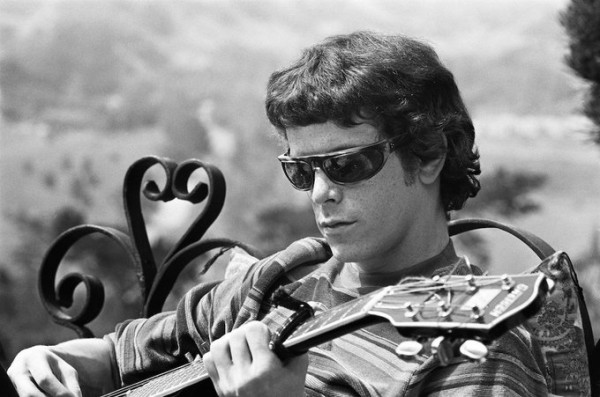
STILL OF LOU REED FROM THE VELVET UNDERGROUND
A beautiful look at the short-lived but seminal rock band
This is one of the most visually stunning music documentaries I've ever seen, and it concerns a band that, though little publicized, is considered by some as influential as the Beatles, Rolling Stones, or Bob Dylan, but about which there's never been a film before. In a 2013 YouTube review of the band's first album, The Velvet Underground & Nico , Anthony Fantano, "internet's busiest music nerd," calls the four LP's the band issued from 1967 to 1970 "one of the most influential discographies in rock music - ever." (For details of the making of the first album, go here.) No wonder this mew film debuted at Cannes and is one of the doc stars of the year.
The exquisite visual quality this film maintains, even within a conventional music documentary format, reflects some of the dash and originality Haynes put into his six-actor cubist Bob Dylan portrait I'm Not There (NYFF 2007). This time the striking look may partly arise from the need to compensate for an almost total lack of live concert footage of the band. (Where were all Warhol's cameras when we needed them?) The solution is extensive use of split-screen, which continues through the entire film. That includes highly effective use of Warhol's "screen test" portrait, his 100-foot-reel 16mm static B&W Bolex movies of people at the Factory just staring into the camera. Haynes' opening fifteen minutes or so are dazzling. He has clips from "I've Got a Secret" where John Cale was brought in for his having performed a John Cage composition in which a single page of musical notes had to be played over 800 times leading to an 18-hour performance.
Oddly, Haynes spends more time on Cale than lead singer/song writer Lou Reed for the first forty minutes. He appears to want to depict the band as more avant-garde, as Cale was, than rock n' roll, as Reed was. (And Cale was available to interview now and Reed is gone.) Haynes uses the expressionless Warhol-filmed screen test face of young Lou Reed in split-screen-flanked by shifting random archival footage to illustrate a voice-over from his sister about his suburban childhood.
There are contrasting split screens of monochrome film clips toned in solid colors throughout. All through, the handsome use of split-screen makes this look like an art film, a museum piece. Bit split-screen is also a way to pack in two or three times as much visual information and still make it look good on the screen. Haynes's editors, Affonso Gonçalves and Adam Kurnitz, deserve credit for how well this works to tell a story as well as delight the eye.
The elegance is most welcome in a usually tired genre. But it means room has been left for future, more dogged docs on the band. Missing here are details of the unique drumming style of Maureen Tucker ("Moe"), not to mention more about the complex emotional dynamics of the group that led Lou Reed to "fire" Andy Warhol and soon after John Cale and then walk away from the band himself.
We do get the band's beginnings, when its name got changed constantly because they were so bad at that point they had to hide who they were to get hired. When they become the Velvet Underground, with Reed, Cale on viola, keyboard, and other instruments, Moe Tucker on drums, and guitarist Sterling Morrison, it was after being seen at Cafe Bizarre that they were invited to Warhol's Factory and became its house band. Warhol brought in the German model and actress Nico, who had appeared in Fellini's La Dolce Vita, to sing with the band, which Reed didn't like, but which worked.
It's okay for this to be for a while yet another Warhol doc because it shows how the Factory, as Cale says, "was all about work." Warhol's collaboration led to his traveling multimedia show, the Exploding Plastic Inevitable developed (from the sound of it one can't say "refined") at the Dom hall in St. Mark's place (1966–1967), a touring silver balloon and sound and light show incorporating the band. It feels as though these Dom multimedia performances, attended by society people and where Nureyev and the whole New York City Ballet came and danced, represented a high point in the band's life.
The tour took them to the West Coast, not a positive story. As Moe the drummer recounts, and others mention, the Velvet Underground hated hippies: instead of giving flowers to people, Moe says, they should find them places to live. Even if the Velvet used drone sounds, their style was mostly very hard-edge. California didn't seem to get them. (According to John Waters, neither did Cape Cod.) When they performed at Bill Graham's Fillmore West, Graham openly wanted them to fail. Nonetheless their sound-and-light show proved far more sophisticated than his. West Coast light shows, it's said, consisted of projecting an image of the Buddha on a wall.
There is a softer side to the band. Anthony Fantana's discussion of "Sunday Morning" sung by Nico revels in its warmth and gentleness. Reed too could sing or chant in a very gentle voice. The complexities of the Velvet Underground's style aren't something this film fully unpacks for us.
In addition to being aggressive and hostile in person and an unreliable hard-drug user, Reed was also sexy and creative, recognizing the unity of writing as an activity, whether fiction, poetry, or song lyrics. What he brought to rock n' roll, David Bowie is heard saying here, was a mindset close to the French poètes maudits, to Baudelaire and Rimbaud - a literary sensibility a step beyond even the sophisticated song lyrics of Bob Dylan. And Reed was always writing. It's he who explores the sexualities of The Factory; the life of a prostitute; the experience of being a heroin addict who decides to "nullify" his life; and what it's like waiting for your dealer.
Warhol's connection with the band was obviously central, making them like the Factory "superstars" famous, but famous also in the service of Warhol. Allen Ginsberg, notably visible in the opening of the 1967 Pennebaker film about Bob Dylan Don't Look Back, also appears here as a Warhol cohort, reminding us how in the sixties American cultural (or "countercultural") figures were like a little band of brothers. Ginsberg nods also to the Lithuanian-born Jonas Mekas, who appears here as a talking head. He was the founder of Anthology Film Archive, godfather of American avant-garde film," and a major organizer of art events who died before this film was released at the age of 97. Warhol toured with the band, doing nothing as "producer" of their first album but get it produced through his celebrity and provide the 'banana" album cover. But he got them the album, and he gave them a lot of encouragement.
Personal antagonisms had been heightened by the pressures of the California tour. On the road there was increased use of speed, resulting on the focus of the White light/White Heat album and the in-fighting when it was being made back in New York after they found the Dom taken over by Bob Dylan.
The band is already disintegrating even though this is only the second of four albums. The gradual decline of a band is a familiar trope even Haynes's stunning visual stylishness can't make very original. But the film's imagery does some typically snappy stuff to evoke an amphetamine high. There is an explosion of split- and multiple-screen archival images at the end showing multiple careers post-Velvet for Reed, Cale, the others, and the 1990s temporary reunions of Reed and Cale, including their collaborative musical narrative portrait of the then late Andy Warhol,Songs for Drella.
The Velvet Underground, 110 mins., debuted at Cannes out of competition Jul. 7, 2021, and is included in some other major festivals, including Telluride, Zurich, New York, Chicago, Woodstock, BFI London. In reviews it has met with very high praise (current Metascore 88%). US release in theaters and on the internet Oct. 15, 2021.
Last edited by Chris Knipp; 10-14-2021 at 10:16 PM.
-
MY DEAD DAD (Fabio Frey 2021)
FABIO FREY: MY DEAD DAD (2021)
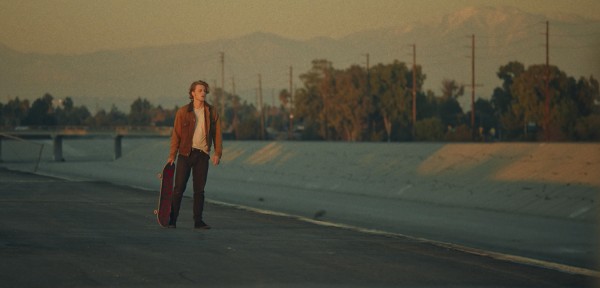
PEDRO CORREA IN MY DEAD DAD
TEASER TRAILER
A laid back West Coast coming of ager with a knack for bro talk
Fabio Frey and his Peruvian-American lead actor Pedro Correa did the writing and they have a knack for bro talk, which the young actors know how to deliver. They are skateboarders, including old pal Kieffer (Booboo Stewart), and not-very-bereaved son Lucas (Correa) is back in the LA of his youth, from Reno, to deal with the unwanted inheritance of said dead dad's apartment complex. Lucas, like the actor presumably, is half Latino (on his father's side) but he says he guesses you wind up looking like the parent you spent most of your time with, and that in his case was his mother. He is blond and can't speak Spanish.
Beside the smooth capture of youthful attitudes the other thing that won my approval early on is the handsome cinematography, which makes LA tackiness look gorgeous and richly colored without seeming touristy or kitsch.
The action, well, that isn't very urgent. There is a girl, whom Lucas thinks of taking away from her older boyfriend whom, unconscionably, she is about to marry. Lucas is also going to be dealing with the building manager/janitor Frank (vet Raymond Cruz) and his uncle Tommy (vet Steven Bauer), whose willingness to help him sell the place with a dubious lawyer seems to be due to money troubles. He has to decide if he is going to sell the place, and this decision will be affected by his evolving understanding of who his father was and what he was like. It's a kind of coming of age by understanding the estranged father.
They're not quite as good at doing some of the non-'bro people (in the writing; the veteran actors can't be faulted). An adorable old Asian lady (Shu Lan Tuan)seems a bit concockted. Her purpose is to show what a nice guy Lucas's dead dad was as others are there to show how much he cared about him, a fact concealed from the boy due to his mother's misguided protectiveness. As Frank, Cruz subtly oscillates between kind and disapproving, and as Uncle Tommy, Bauer conveys a wired desperation.
Lucas, who is disdainful of the whole situation at first, thinks selling the building is a no-brainer. But it's not like he has another more interesting set of things to do back in Reno. The trajectory will be toward seeing things as more complicated.
Temporary plumbing and automotive crises aside, none of Dead Dad's action seems particularly urgent, but that's the beauty of it. The girls says Lucas is super-intense, but nobody else really is and the movie itself never strains. These guys give the impression of knowing what they're doing as filmmakers from minute to minute , and their strength is their being relaxed about whatever it is they're trying to prove. Everyone is well cast. Everybody tends to seem nice without being saccharine, which, when you think about it, is another rare accomplishment. The aim is not to put Lucas in harm's way but to gently wake him up.
A nice beginning; an enjoyable watch. I would like to see more by Frey and Correa.
My Dead Dad, 133 mins., debuted at Woodstock Oct. 1, 2021 and Mill Valley Oct. 17. It has also been selected for Austin.
Last edited by Chris Knipp; 10-13-2021 at 01:19 PM.
-
BERNSTEIN'S WALL (Douglas Tirola 2021)
DOUGLAS TIROLA: BERNSTEIN'S WALL (2021)
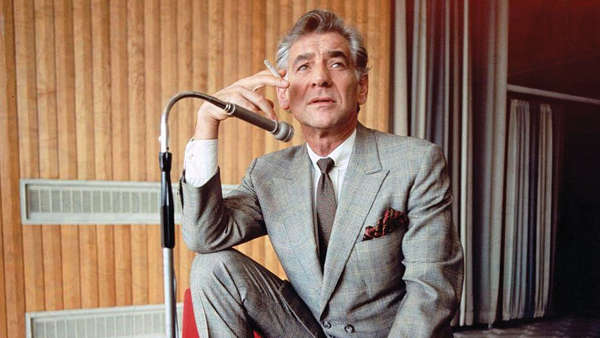
THE PERPETUAL CIGARETTE
A film that satisfies and frustrates in equal measure
On the one hand there is urgent need for documentary films about one of the greatest figures in 20th-century classical music and so Bernstein's Wall, with its wealth of visual information and its constant running narration in the voice (or voices) of Leonard Bernstein himself, is very welcome. On the other hand, what is needed is not just a very good movie, which this is, but a searching, original, brilliant, and beautiful one, which this is not. Evidence of a certain lack of real depth, or bravery, is revealed in the relatively timid treatment of the subject's homosexuality. The lack of beauty is shown in the ugly, out of focus, badly exposed image of the man talking to the camera that starts things off. This is not what Todd Haynes would do, as his exquisite Velvet Underground film shows: it is beautiful from the first; it cares how it looks. Wouldn't Lenny?
That treatment (of the homosexuality) subtly and rather cleverly begins - but unfortunately also ends - with unvoiced on-screen printouts. They show excerpts from letters - from and to Aaron Copeland and to and from Bernstein's Chilean wife Felicia. There is delicacy in this. After all he was, essentially, closeted, and the topic and the behavior were taboo in the forties and fifties, when our story begins. But The film stops there, with nothing ever on the sound track, treating gayness by implication, now in the 21st century, like Wilde's "love that dare not speak its name": the facts are never voiced, and details readily found in books and the Wikipedia article on Bernstein are omitted.
Okay, maybe Lenny never spoke on film or tape about this topic.( Or did he?) In any case there could have been lots more printouts, and other images. There was a gay mafia of music just as there was a Jewish mafia of music, and therein doubtless lie many tales worth telling, and material for other documentaries.
The complexity of Bernstein's immense being, and contribution, lie in his embodying the ultimate mainstream American celebrity of his time, one who could kiss Jackie Kennedy dramatically on a stage in Washington and hobnob (to great notoriety and exploitation by the malicious right wing wit Tom Wolfe) with Black Panthers in his Park Avenue apartment. He could further the anti-Vietnam War cause simply by landing his celebrated name. He could conduct Beethoven's Ninth in West Berlin and East Berlin on successive days after the fall of the Berlin Wall, he could write a musical about Latinos and a radical, controversial, epic mass (discussed with disgust by Haldeman and Nixon on a White House tape; the film's other villain is Times music critic Harold C. Schonberg, who attacked Bernstein mercilessly). He could conduct beloved televised Young People's Concerts and quibble amicably but firmly in public with Glenn Gould about tempos in a Brahms concerto (this is omitted from the film but important to me, as it was to them). He could be a full-on gay man (as Wikipedia says; Tirola doesn't) and have a wife and three kids. (The wife died young; the marriage is fraught; the kids give their blessing to this film, but the film tells us too little about them or their mother.)
All this could happen in one man because he was essentially an outsider, a Jew (and a gay man) who knew Hebrew, whose father, an emigrant from a Russian shtetl, wanted him to enter his successful beauty supply business - after he graduated from Harvard; because he was a genius, but had a common touch, recognized by construction workers on his passing. He was a man who lived intensely, who felt a lot, emoted a lot, smoked so constantly his whole life that it killed him, probably ate and drank too much and undoubtedly loved too much; Owen Gleiberman in Variety calls him "a fierce hedonist." All (or most) of this is mentioned, illustrated by this film, and recounted by Lenny, but needs the extra depth that would probe the full richness of irony, contradiction, and excess that define this man whose greatest gift is how he made these qualities accessible to millions by becoming the dominant superstar of American high culture.
Instead, there is so much (enjoyable, astonishing) information that little emerges profoundly and one wishes for a film that focused and went into depth. Possible films doing that might zero in on, to name a few topics for specialized films: Lenny the conductor (a topic blurred here by "feverish" editing); Lenny the composer; Lenny the celebrity; Lenny & Beethoven, Lenny & Vienna - and last but not least, gay Lenny.
To anyone who grew up in the fifties and sixties Leonard Bernstein was an inevitable figure, first associated with the New York Philharmonic, though one learns here that he resigned from that and became free-floating, never going back to being the official conductor or music director of any one orchestra (unless of Tanglewood? Another topic underrepresented here). What emerged to me later through Seiji Ozawa, whom he influenced (as he did several other San Francisco Symphony leaders), was the fluent, joyous, showy, dance-y conducting style. And there was something schmaltzy and kitsch about him. But not too much for him to give the prestigious Norton Lectures at Harvard. Those of us who dreamed or fantasized about being a conductor, were probably thinking primarily of Lenny, the joyous, hammy celebrant, or of Von Karajan, the forbidding, exultant commander.
A must-see, if you're interested in classical music and half a dozen other subjects. It's a place to start.
Bernstein's Wall, 100 mins., previewed at Tribeca Jun. 2021 and had its premiere at Telluride Sept. 2021, showing at Mill Valley, the Hamptons and San Diego in Oct. Nice review by Brian Tallerico (RogerEbert.com) written at Telluride.
Last edited by Chris Knipp; 10-20-2021 at 11:41 PM.
-
ANIMA 莫爾道嘎 (Cao Jinling 2020)
CAO JINLING: ANIMA 莫爾道嘎(2020)
 \
\
QI XI IN ANIMA
Inner Mongolian drama set in an eighties lumber camp
Set in Inner Mongolia in the 1980s, when China launched economic development programs that resulted in widespread clear-cutting of old growth forest, this is a passionate but overbearing and unduly gloomy debut that combines fraught love conflict with a message about threatened ethnic minorities and planetary degradation. Anima focuses on two Evenki tribe brothers and their rivalry over a pretty and very resourceful "wild woman" widow; but it is really about the death of their traditional way of life, and of our planet.
-
JOCKEY (Clint Bentley and Greg Kwedar 2021)
CLINT BAILEY, GREGG KWEDAR: JOCKEY (2021)
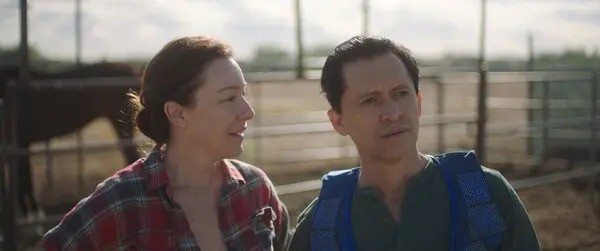
MOLLY PARKER AND CLIFTON COLLINS JR. IN JOCKEY
The old warrior theme refinished with rich patina
Sheri Linden, in Hollywood Reporter, speaks of Jockey as "achieving the kind of seamless fusion of narrative and documentary that Nomadland strives for but only sporadically achieves." Enough said.
Clint Bentley and Greg Kwedar (Transpecos) are filmmaking partners. Last time Kwedar was the director. This time it's Bentley, who grew up as a jockey's son and aware of that circus-carney world of touring tracks and getting by, who takes the helm.
This low keyed film has things in common with Chloé Zhao's first feature, The Rider, including a protagonist's visit to the hospital to see someone more severely injured than him riding horses, when he himself may wind up having to stay off them to save his life. But what's different is that here the three central actors are not found people used as actors like the injured rodeo cowboy played by Brady Jandreau in The Rider but acting pros given every opportunity to do their stuff, which they do impressively. While Jockey feels like an artily shot doc for the first five minutes, it's soon clear this is very much a dramatic feature.
First among equals is Clifton Collins Jr., the veteran character actor, whose performance was greatly admired at Sundance. He is fiftyish and a bit tall and heavy for a jockey but seamlessly plays Jackson Silva, a mid-level rider in his mid-forties. In this profession that's over the hill: race riders take a body beating second to none. Jackson has broken his back three times; he is racked with pain; he goes numb on one side; he risks losing the use of his legs, and is looking at serious disability down the road. Collins plays the traditional beats of the warrior facing the last battle here with exceptional salt and soul. Much of the action is to be read in his face as shown in closeups by Brazilian dp Adolpho Veloso, who shot in very wide screen ratio. Veloso's love of the magic lights of dawn and dusk and profile shots is a little excessive - it see,s rarely midday here - but he provides a lovely perpetual twilight that's a metaphor for the life we're gazing into.
The drama here is how a horse racing pro must face a career's end just as a 19-year-old claiming to be his son arrives on the scene. Moises Arias, who is jockey-small, as the kid Gabriel Boullait and Molly Parker (of "Deadwood") as Ruth Wilkes, Jackson's longtime trainer-cohort almost-lover, also display admirable acting craft, Arias for breathtaking understatement, Parker for old-shoe warmth.
The film was shot at Surf Paradise Racetrack in Phoenix, Arizona, where the filmmakers coaxed real jockeys and grooms into playing themselves, when a race at another track didn't lure them away. Like many local tracks Surf Paradise is faded in the foreground because the betting public has to a large extent quit attending races in favor of betting on and watching them remotely; but in the background the horses and crew are still all there to be captured on film.
A jockey's "chapel" at this track is the scene of such men grousing and joking about their injuries. The film shows horses, not races. The races are conveyed twice by showing only Jackson, up close: again it's his face that tells us all we need to know.
There's also a brilliantly gifted horse, Dido's Lament, found for a song by Ruth Wilkes, and big race coming up, and a diagnosis for Jackson "that serves the same function as those scenes in all the Rocky movies where a doctor warned Rocky Balboa that if he got in the ring again he'd go deaf or blind or suffer brain damage. . ." as is pointed out by Matt Zoller Seitz in his affectionate, ruminative review on RogerEbert.com - one of a number of admiring ones of this small but distinctive movie.
Don't come to Jockey for a fully fleshed-out story or originality of theme: the critics who sought those left unsatisfied. This is a character study, and an acting feast that serves up a slice of authentic track career life. Its storyline is just a light framework for its wistful sadness. It feels seedy and downbeat, but that's the muddy, rough-hewn world we're in here; and the filmmakers put a sweet spin on things. Jackson has denied, welcomed, cursed, embraced Gabriel, painfully loses his last race but sees the kid has done well in it and that brings a final smile. And when Clifton Collins, né Clifton Gonzalez Gonzalez and himself descended from riders, cracks a smile, it has ripples of meaning that may stay with you for days. Because of its greater dramatic heft, this movie takes us into the world of a man who must give up riding even better than The Rider does.
The sounds scored by Bryce and Aaron Dessner of The National are filled with subtle looming dawns and dusks, like Veloso's images.
Jockey, 94 mins., debuted at Sundance Jan. 31, 2021, shown thereafter in a dozen other international festivals including Toronto, Zurich, Busan, the Hamptons, Brisbane and Stockholm. US theatrical release by Sony Pictures Classics in New York and Los Angeles on Dec. 29, 2021. Rolling out release in early 2022 including Jan. 21 in San Francisco, Jan. 28 in the East Bay, Feb. 11 Santa Cruz Metacritic rating: 76%.
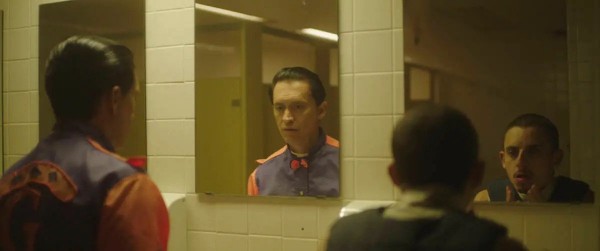
CLIFTON COLLINS JR. AND MOISES ARIAS IN JOCKEY
-
MOTHERING SUNDAY (Eva Hussun 2021)
MOTHERING SUNDAY - RELEASE DAY MARCH 25, 2022
EVA HUSSON: MOTHERING SUNDAY (2021)
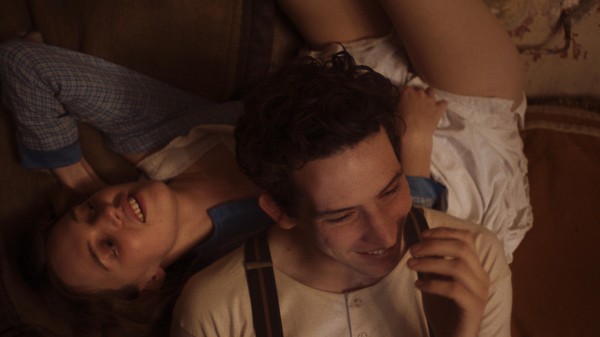
ODESSA YOUNG AND JOSH O'CONNOR IN MOTHERING SUNDAY
TRAILER
A French director sexes up the world of "Downton Abbey" in her Graham Swift adaptation
Mothering Sunday, adapted from the eponymous novel by Graham Swift, is beautiful, bold, sad, experimental, well acted - yet not quite right. It jumps around in ways that might work in a book, a prize-winner that's been called the author's best work. But "jumps" is misleading because it suggests rapid actions, and this film moves very slowly.
Mothering Sunday's plethora of shifts forward and backward slow down what is already rather too leisurely, in the meticulous and minute movement of individual scenes, held up by many sensual, almost tactile closeups. They make you want to stop and look even closer - which you can if you're watching a screener as I was, and which you also can, without even needing to hit the space bar, if you're reading a book. But when it is all done, this film leaves an imperfect sense of an action or a passage of time. To quote the quotable Peter Bradshaw in the Guardian "there is "something a bit indulgent and classy about the unvarying andante pace."
"Mothering Sunday" was a day when servants got time off to visit family. Jane Fairchild (Australian actress Odessa Young of Shirley), being an orphan who's been in service since the age of 14, is given leave by Mr. Godfrey Niven (Colin Firth, well dressed but bland)simply to spend the day on her own. She pretends to go off on her bike to ride and read a book from the Niven library, but she's had a secret telephone signal from her clandestine upper class lover, Paul Sheringham (Josh O'Connor, the acclaimed Prince Charles of "The Crown," also interesting here) that his entire family is off for a large formal picnic with the Nivens at Henley, and the great Sheringham family house is available for them to make love in.
The resulting long, sensual scene is arresting not only in its beauty and in O'Connor's striking performance but for all the bold and extended nudity. After the lovemaking is over Paul tells Jane to linger and she does, wandering around the house naked, looking at books, noshing on a meat pie and bottle of ale. Not only that, beforehand Paul walks around naked before the camera and there's more male frontal nudity than you'll see in a month of Sundays. This is likely to be more remembered than the the lingering bereavement of the two families who have both lost two sons in the War; or the the sadness of the finale of this central event; or things, also sad, that happen later in the time-scheme; or Olivia Coleman's ill-humored behavior. Olivia Coleman is nearly always ill-humored. It's only when she's pleasant that it's surprising. There are questions about Jane. How come she has such a neutral, educated voice? Why isn't there a clear-cut difference of class between her and Paul? And how are we to know that she later becomes a famous novelist if her narrative voice in the book has been removed from the film?
As for the nudity, be it known that the debut film of Eva Husson, who is French, is called Bang Gang: A Modern Love Story (2015), and is a non-stop group sex orgy of well-off French teenagers in the summertime. Her second film, (Girls of the Sun, 2018), a flop about women fighting ISIS in Kurdistan, seemed to be an attempt to atone for the sheer pornographic indulgence of her first. It's as if a bit of Bang Gang spilled over into that scene between Odessa Young and Josh O'Connor. But be it also known that Jane's wandering around naked in the great house is part of the novel, not a risqué interpolation.
The rest is standard Downton Abbey stuff, but with the sensuous closeups by dp Jamie Ramsay breathing down the necks of the well-dressed toffs, Olivia Coleman pouting, Colin Firth being wimpy and sweet, servants popping champagne and everyone remembering that their sons died in the War - as did the boyfriend of Milly (Patsy Ferran), Jane's confidante the kitchen maid. Swift's novel blends sadnesses, first that of the aftermath of World War I, then the tragedy that happens after Jane and Paul's idyll, then - while an older Jane, who got a job at a bookstore and left "service," is seen becoming a very successful writer - the fading away of this new Jane's new man, a brilliant and very loving philosopher known only as Donald (the talented Nigerian-British actor Sope Dirisu). A final sort of coda (but not without slipped-in peeks back at the young Jane) is a scene with Glenda Jackson as the elderly Jane, occupying a comfortable London house alone and called to the door to be asked by a crowd of journalists what she thinks of winning the biggest prize of all. She's blasé, but she thinks it's great.
One might well argue that the events of that "Mothering Sunday" day in 1924 alone would have made a good movie, without weaving in so many flash-forwards of Jane's later life as a successful novelist. Graham Swift likes it complicated, as was in evidence in the film of his Last Orders (2002) - though I can't greatly recommend that, even though it was directed by Fred Schepisi.
Leslie Felperin in her Hollywood Reporter review observes that Mothering Sunday constitutes "a posh package that should appeal" not only "to older viewers who swoon for 'Downton Abbey‘s' mix of frocks and manners" but also to "a younger demographic that likes a more carnal blend of romance and riches, as in Netflix series 'Bridgerton'." This is probably true, but is a commercial viability assessment a bit above my pay grade. What I might be qualified to note is the absence of the "intensely literary interior voice" (Felperin again) of the book's protagonist, carved away here, leaving the sexy, slow-moving visuals and the book's basic melodrama and thus giving us a story about a writer without the writing - but with one very sexy scene between Odessa Young and Josh O'Connor.
Mothering Sunday, 104 mins., debuted in the "Premiere" section of Cannes Jul. 9, 2021, and showed in about a dozen other international festivals including Toronto, Vancouver, the Hamptons, BRI London, Mill Valley and Chicago. US release begins Fri., Mar. 25, 2022 in New York (four locations) and Los Angeles (two locations), moving on later. Opening in San Francisco Apr. 1 and in other Northern California locations Apr. 8. Metacritic rating: 78% (originally; now 67%). Not yet available online.
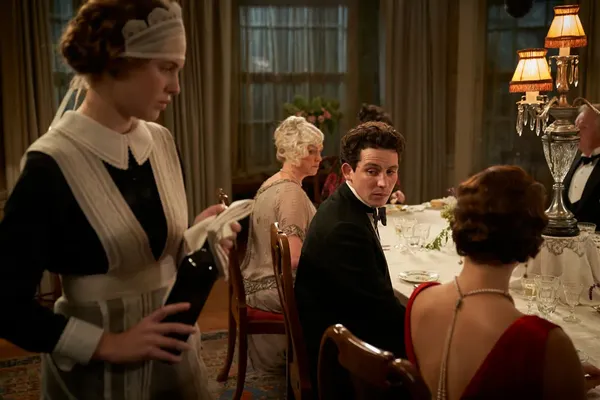
ODESSA YOUNG, JOSH O'CONNOR IN MOTHERING SUNDAY
-
JIMMY CHIN, ELIZABETH CHAI VASARELYI: THE RESCUE (2021)
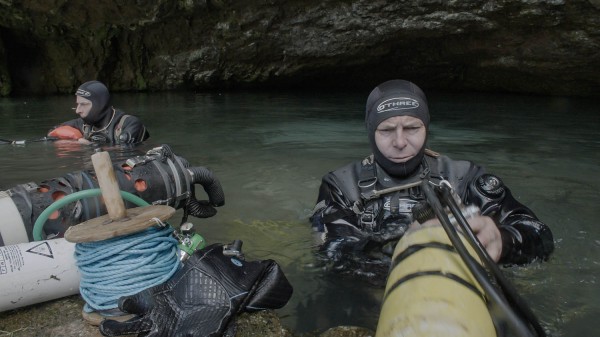
JOHN AND RICK, THE UK ODDBALLS WHO SAVED THE BOYS
Compelling retelling of the Thai cave rescue from the cave divers' POV
This film takes you deep into a flooded cave, a muddy, twisty, dark place that's terrifying, and into the world of men who love to be there. Their hobby enables them to carry out a tremendously challenging rescue operation with the whole world watching. Nobody else could have done it. But they couldn't have done it either without a joint international effort and above all the bravery and endurance of the boys (age 11 to 16) who spent 13 days trapped in the cave, nine of those days before anyone found them or could communicate with them. This tells the inside story of the men, not so much of the boys. The boys' story remains to be fully told. But this is still a great story. And incredibly suspenseful.
The Rescue is a film the work of the pair responsible for the Best Documentary Oscar film of 2018, <a href="https://www.chrisknipp.com/writing/viewtopic.php?f=1&t=4079">Free Solo</a>, so you know, or at least strongly suspect, that it will be well made, indeed exceptionally so. It's about the rescue of the Wild Boars youth soccer team from the flooded cave in northern Thailand in the summer of 2018, so you know it will be upbeat, because the boys and their young coach were saved. That said, this is a very different film and event from Free Solo and ace rock climber Alex Honnold. But it is as uplifting as you could want it to be, a happy and inspiring story of courage and persistence that makes you think hard about goodness and dedication to the welfare of others.
Free Solo is above all the analysis of an unusual individual, a world-class risk taker of extraordinary skill and very much a not very well-socialized loner, whose climactic exploit required that people, the film crew, and even his girlfriend keep their distance. The Rescue is about saving thirteen people, not one, who were isolated from the world against their will; and according to reports upwards of ten thousand people participated in various ways in their rescue. The one film is a story of purposeful solitude, a lonely exploit; the other, of extraordinary teamwork, a disaster involving a whole nation that the whole world watched and many nations shared in resolving.
One thing critics of The Rescue point to is this: The filmmakers are not participants this time. Not only that, but they were not able to speak to the boys or their families in making this film. They speak to a lot of people, and they get some of the participants to reenact moments from the events. But they don't get inside anybody's head quite the way they do Alex's. Some critics also find the pace of this film "languid" at the outset. Okay: this isn't as unique a film. But it's a richly detailed account of an extraordinary event and it's highly recommended.
What happened was that after practice, the rural Wild Boars northern Thailand junior soccer team, aged 11-116, went into the cave with their 25-year-old assistant coach to explore. This was not so unusual as it sounds. It was a traditional play spot for the boys. But it was midsummer, June 23, and the monsoon season, coming on early, brought a very heavy rain that flash-flooded the cave and trapped the boys and coach. It wasn't until nine days later that anyone was able to find them - over four kilometers from the mouth of the cave, on a high ledge where they had taken refuge. When the cave divers came and found the boys, they had cameras. The sight of them is unforgettable.
We hear from the Thai honorary British consul and a commander of the Thai navy SEALS. The latter played a very important role. We also hear from a young Thai woman who had just recently been in England and met a cave diver and they had apparently fallen in love. She was back home. These exceptional events brought him to near where she lived. We see numerous brief news clips to show how big a story this was all over the world. We also see extensive coverage of the operation to remove flood water from the cave - a prodigious effort essential to the rescue's success. Pressure of time makes this story so suspenseful. The boys had to be extracted before there was another big wave of monsoon rain that would have made rescue impossible. was almost impossible anyway.
We hear from a lot of people. But the key figures in the rescue are a small handful of mostly British cave divers, headed by retired firefighter Rick Stanton and his frequent diving partner, John Volanthen, an I.T. consultant, both middle-aged men who carried out this odd, to most people scary and forbidding pursuit as an intense, beloved hobby for many years. They're an elite, oddball crew - as it turns out, rather loners, so not so unlike Alex Honnold, after all. It turns out navy SEALS just don't have the skills for swimming through a long, twisty, irregular, narrow flooded cave passageway. (One of them died due to running out of oxygen.) It was a while before it was clear that only specialized cave divers could do the job and Rick and John were called in, referred by the highly visible local British expat Vernon Unsworth.
When the divers found the lost team of boys and their young coach , huddled, brave but forlorn, on their ledge, the enormity of the problem became clear. How could they get them out? It required swimming for several hours underwater with an oxygen tank. The rest of the film depicts the solution found and the three-day operation to bring the boys out, one by one. The solution, spearheaded by an Australian cave diving doctor who doesn't think it will work, requires the support of the United States military, the Royal Thai Navy, the engineers behind a massive groundwater pumping operation, and a handpicked gang of additional divers from across Europe. (No need for Elon Musk's proposed miniature submarine, never mentioned here.)
To tell this, Chin and Vasarhely skillfully merge news and hitherto unseen footage of the rescue with face time and seamlessly blended reenactments into an intense, edge of the seat tale. There remains the story of the boys, how it was for them. The filmmakers manage to cover their omissions and what Jessica Kiang calls in her <a href="https://www.nytimes.com/2021/10/07/movies/the-rescue-review.html">New York Times review</a> a "defiantly outsider perspective" with the compulsiveness of the events and their narrative skills that make this, as Dallas King of <a href="https://www.flickfeast.co.uk/reviews/film-reviews/the-rescue-2021-film-review/">Flickfeast</a> called it yesterday, "an incredibly empathetic experience," one we follow as if it were going on as we watch, and we were watching it firsthand. This is a special kind of documentary filmmaking at which Chin and Vasarhelyi are masters. The boys' POV remains to be heard from, but the rescue couldn't be told better than this.
The Rescue, 107 mins., debuted at Telluride Sept. 2021, showing also at Toronto, Camden, Hot Springs, Woodstock, the Hamptons and Jihlava (Czech Republic), a Natural Geographic film with a US theatrical release starting Oct. 8. Screened at Landmark Shattuck, Berkeley, Oct. 29. <a href="https://www.metacritic.com/movie/the-rescue-2021">Metascore: 86%</a>.
 Posting Permissions
Posting Permissions
- You may not post new threads
- You may not post replies
- You may not post attachments
- You may not edit your posts
-
Forum Rules




 Reply With Quote
Reply With Quote



 \
\





Bookmarks